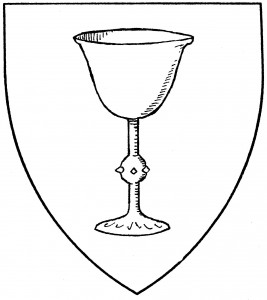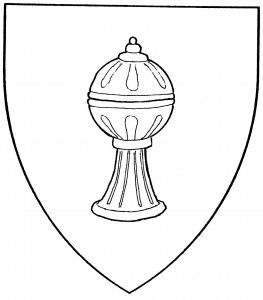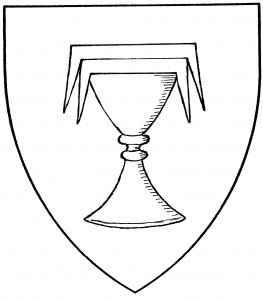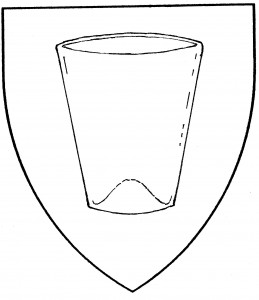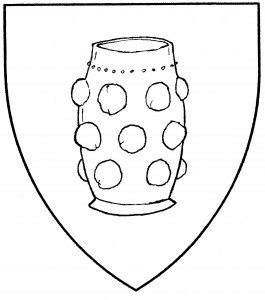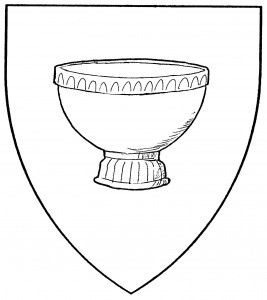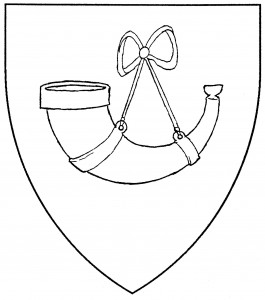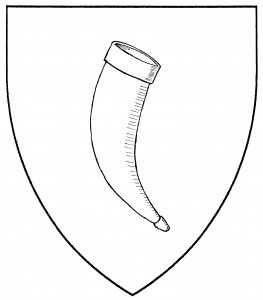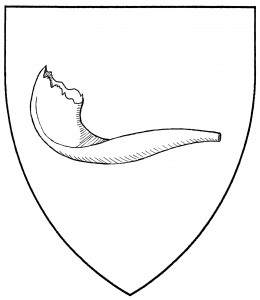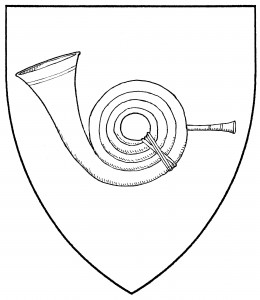A cup is a drinking vessel, consisting of a bowl atop a stem and base. It may also be termed a “chalice” or “goblet”, especially if ornamented or jewelled; such details are considered artistic license. The cup is an ancient charge, found in the arms of de Argentine c.1244 [Asp2 216].
In Society armory, the cup is usually shown with open mouth; this matches examples from period Italian heraldry, such as the arms of de Bonfilliis, mid-15th C. [Triv 64]. In most other period armory, the cup is normally covered: with a domed lid in English armory, with stiffened cloth in Iberian and German armory. Such covers seem to have counted for little if any heraldic difference; they are nonetheless blazoned in Society armory. The mouth of the cup is to chief by default.
Related to the cup is the “beaker”, a basically cylindrical shape (slightly tapering) without stem or base. It too is a period charge, found in the canting arms (Italian bicchiere) of di Bizeriis, mid-15th C. [Triv 65]. A slightly modified form was found in the canting arms of Escher vom Glas, 1605 [Siebmacher 199]; this form shows a beaker “prunted” in the typical German mode.
Other drinking vessels found in Society armory include the “mazer”, a festive drinking bowl traditionally made from maple wood. It is usually shown footed and decorated.
For related charges, see bowl, pitcher, saltcellar, tankard. See also cupping-glass, mortar and pestle.
The Baron of Rising Waters bears: Gyronny arrondi gules and argent, a goblet Or within a laurel wreath vert.
Snorri Styrr Bolli bears: Gules, a chalice argent.
Armand de Mortain bears: Per pale azure and sable, three cups Or.
Kolfinna Thorgrimsdottir bears: Argent, a covered cup and a gore purpure.
Elen Greenhand bears: Or, a mazer sable grasped by a pair of hands fesswise vert, within an orle of acorns proper.
Brangwain nic Stiubhard bears as a badge: On a beaker azure a dolphin hauriant Or.
